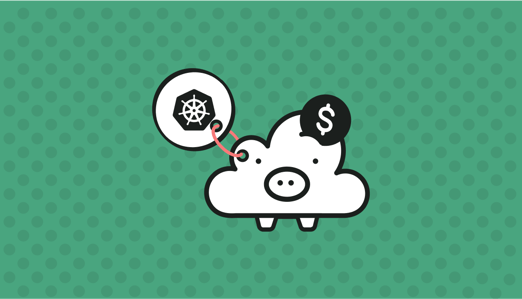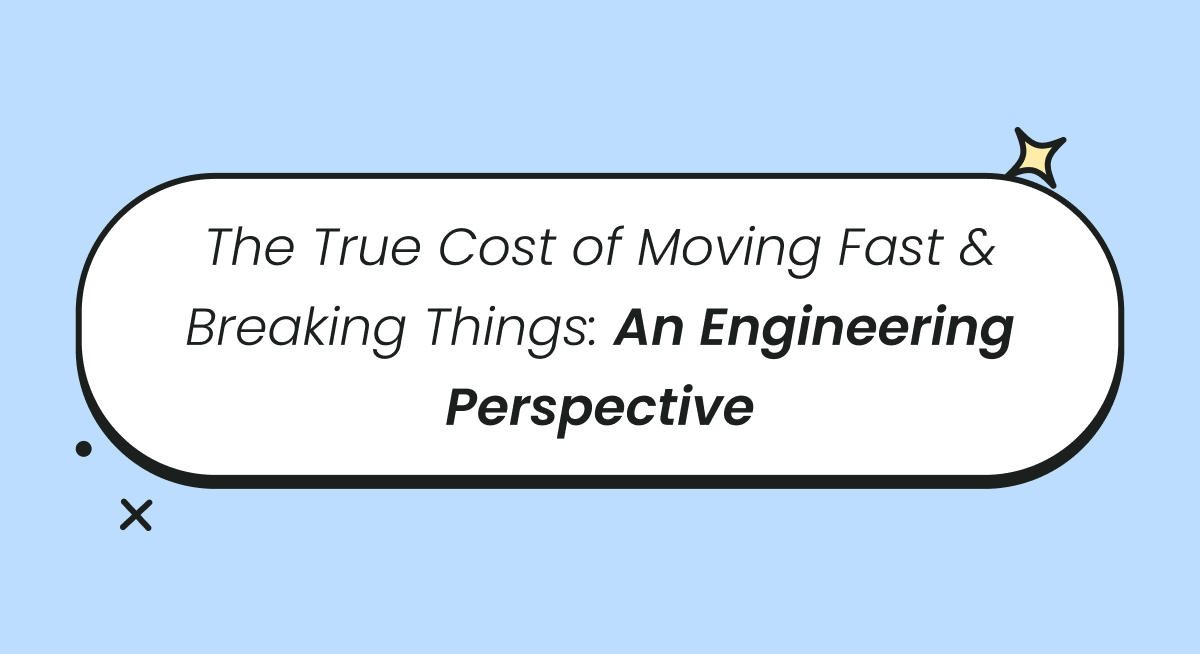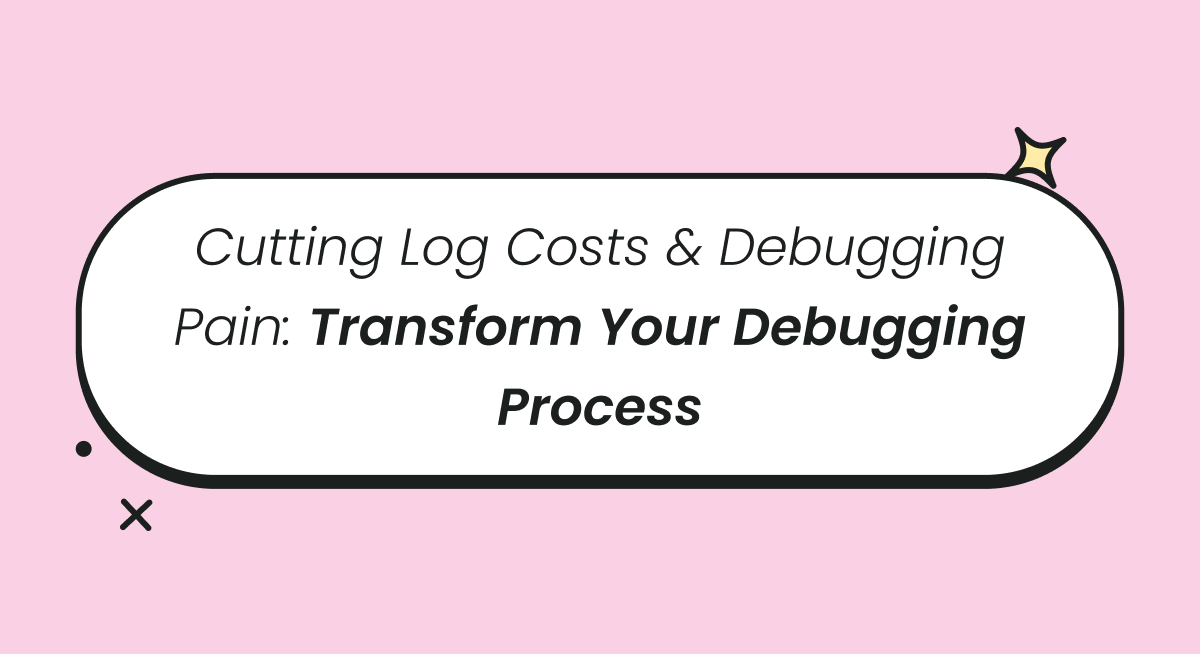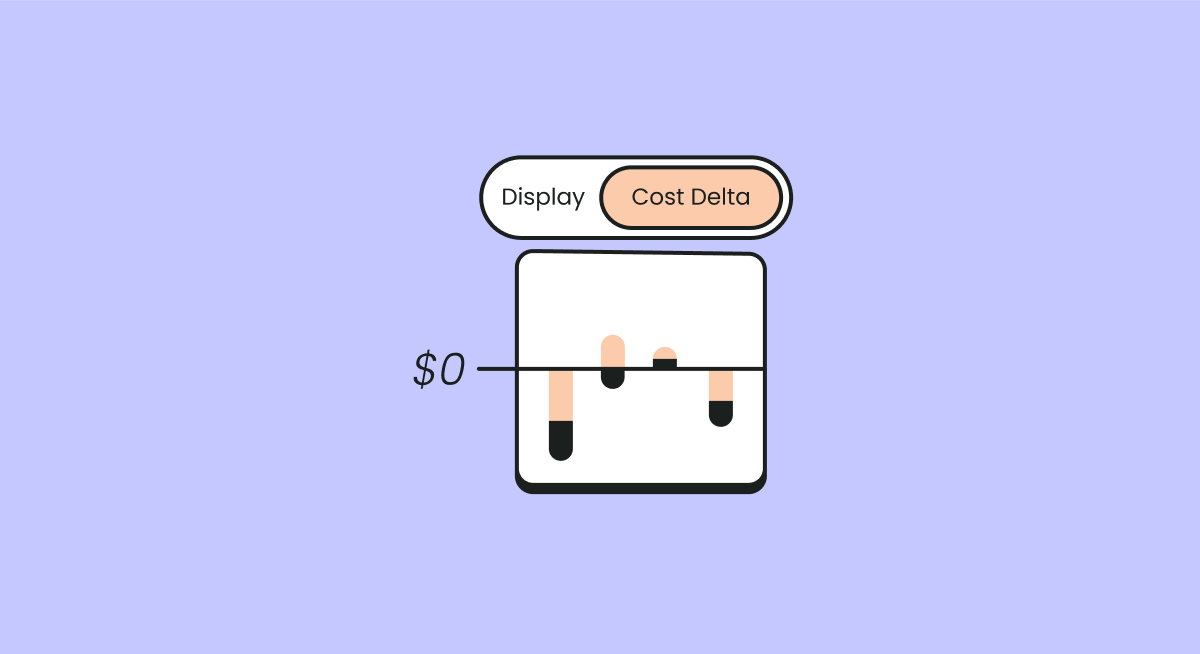
What Is the Cost of Kubernetes?
Kubernetes is the world’s most popular container orchestrator. While the Kubernetes software itself is open-source and free, running it in a cloud environment or on-premises servers incurs costs based on the scale, resources used, and the specific cloud provider or hardware chosen.
An organization’s Kubernetes spend is primarily determined by the cost of resources required to run containerized applications on a cluster. This includes the expenses associated with compute instances, storage, and networking resources used by the Kubernetes nodes. If Kubernetes is maintained in-house, manpower costs are another significant expense.
The total cost of Kubernetes can vary depending on the size of deployments, the number of clusters, and the choice between managed services or self-managed clusters. Managed Kubernetes services offered by cloud providers may include additional costs for management and operational features but can reduce the operational burden on teams.
This is part of a series of articles about Kubernetes cost optimization.
9 Factors that Determine the True Cost of Kubernetes
Here are the key components that affect the overall cost of using Kubernetes.
1. Compute Costs
Compute costs in Kubernetes environments are driven by the number and type of nodes (virtual machines or physical servers) in a cluster. These costs depend on factors like the CPU and memory resources required by the applications running in containers.
The pricing can vary significantly based on the choice of on-demand instances, reserved instances for longer-term commitments, or spot instances for non-critical workloads at lower costs. Effective management of compute resources, such as scaling nodes in response to application demand, can help optimize these costs.
2. Storage Costs
Storage costs in Kubernetes are influenced by the amount of data stored and the storage class selected (standard, SSD, etc.). Persistent volumes, which are used for storing application data, contribute to these costs.
The price can vary based on the performance characteristics of the storage, the redundancy and backup options chosen, and how the data is accessed. Optimizing storage usage by regularly cleaning up unused volumes and selecting the appropriate storage class for the workload can help reduce expenses.
3. Network Costs
Network costs in Kubernetes stem from data transfer within the cluster, between clusters, and with the Internet. These costs can include charges for internal network usage, ingress and egress traffic, and load balancing.
Pricing models depend on the cloud provider and can significantly impact overall Kubernetes costs, especially for applications with high network traffic. Strategies such as network traffic optimization and careful selection of network services can mitigate these costs.
4. AI and Data Analytics Costs
AI and data analytics workloads in Kubernetes may incur additional costs due to the use of specialized computing resources, like GPU instances for machine learning tasks, and the storage and processing of large datasets.
These costs are driven by the computing and storage resources consumed by data-intensive applications. Optimizing the allocation of these resources, such as using preemptible GPU instances for training models, can help manage these expenses.
5. Database Costs
Database costs in Kubernetes are related to the deployment and management of database services within the cluster. This includes the costs for persistent storage used by databases, and potentially additional charges for managed database services that offer automated backups, scaling, and high availability.
Efficient database management, such as choosing the right database service for the workload and optimizing database queries, can help in controlling these costs.
6. Logging and Monitoring Costs
Logging and monitoring are essential for maintaining the health and performance of applications running on Kubernetes. While there are open-source logging and monitoring tools available, these tools manage high volumes of log data and metrics, resulting in significant data storage and management costs. Using commercial monitoring solutions adds to the expense.
Costs can be managed by optimizing log levels, aggregating and filtering logs before storage, and using cost-effective monitoring tools that offer necessary features without over-provisioning.
7. Backup and Disaster Recovery Costs
Backup and disaster recovery strategies introduce additional costs for storing backups and replicating Kubernetes data across multiple locations. These costs are essential for ensuring data durability and application availability in case of failures.
Optimizing backup frequencies, data retention policies, and selecting cost-effective storage solutions can help reduce these expenses.
8. Cluster Management and Operations Tools
The use of cluster management and operations tools, including those for deployment, scaling, and managing application workloads, can add to the overall costs of running Kubernetes. While some tools are open-source and free, others may have licensing fees or subscription costs.
Selecting tools that match the operational requirements without excessive features and utilizing open-source solutions where appropriate can help manage these costs.
9. Support and Maintenance Costs
Support and maintenance costs include expenses for technical support services and the cost of carrying out software updates and patches.
For organizations relying on managed Kubernetes services, these costs might be included in the service fees. For those managing Kubernetes in-house, the primary costs will be related to time spent by in-house IT experts. Ensuring efficient operations and minimizing the need for external support can help control these costs.
Managed Kubernetes Pricing: EKS, AKS, GKE, OKE
Many organizations opt to outsource Kubernetes management to a cloud provider. Let’s review the cost of managed Kubernetes on four leading cloud providers: AWS, Microsoft Azure, Google Cloud, and Oracle Cloud Infrastructure.
Note: The pricing below is correct as of the time of this writing and is summarized for clarity. For up-to-date pricing information and additional pricing options, refer to each provider’s official pricing information.
Amazon Elastic Kubernetes Service (EKS) Pricing
Amazon Elastic Kubernetes Service (EKS) facilitates the deployment, management, and scaling of Kubernetes applications either in the cloud or on-premises. It offers high-availability clusters and simplifies the processes of node provisioning, updates, and patching.
The fee for running an EKS cluster is $0.10 per cluster per hour, which includes the operation of the Kubernetes control plane. In addition, customers pay for the computing resources used to run their Kubernetes workloads. Users can run Amazon EKS in various environments:
- With Amazon EC2: The costs incurred are for the AWS resources needed to run the Kubernetes worker nodes.
- With Fargate: Pricing is based on the memory and vCPU resources utilized.
- With Outposts: Users pay for the deployment of the EKS cluster in the cloud, while the worker nodes operate on Outposts EC2 capacity at no additional charge.
Azure Kubernetes Service (AKS) Pricing
Azure Kubernetes Service (AKS) reduces the complexity associated with managing Kubernetes, allowing users to concentrate on their workloads.
Unlike alternative solutions, AKS provides cluster management free and does not charge a fee for the Kubernetes control plane. Customers pay for the computing resources used to run their Kubernetes workloads. The AKS free tier provides $200 in free credits which can be used for a period of one year.
Learn more in our detailed guide to AKS pricing
Google Kubernetes Engine Pricing (GKE)
Google Cloud offers Google Kubernetes Engine (GKE), a platform for deploying, scaling, and managing containerized applications.
GKE offers two operational modes—standard and autopilot—with a flat fee of $0.10 per hour per cluster. In addition, users pay for computing resources used to run their Kubernetes worker nodes. The service offers a free tier, which includes monthly credits worth $74.40.
Related content: Read our guide to Kubernetes cost management
Oracle Cloud Infrastructure Container Engine for Kubernetes (OKE) Pricing
Oracle Cloud Infrastructure (OCI) offers the Container Engine for Kubernetes (OKE), which enables customers to deploy, manage, and scale applications in a highly available Kubernetes environment. Pricing for using OKE is primarily based on the consumption of computing, storage, networking, and other infrastructure resources required by the OKE clusters.
The cost associated with OKE worker nodes—comprising Oracle Cloud Infrastructure Compute instances—is determined by the OCPU and memory resources allocated to these nodes, according to the chosen instance shape. In addition to resource consumption costs, there might be a per-hour fee for the Kubernetes control plane. OKE provides three options:
- Basic Cluster: Control plane is free
- Virtual Node: $0.015 per virtual node per hour
- Enhanced Cluster: $0.10 per cluster per hour
Why Do Kubernetes Costs Get Out of Hand?
Allocating costs in Kubernetes environments poses challenges due to the shared nature of resources and the dynamic scaling capabilities of containerized applications. Here are a few reasons the costs of Kubernetes can quickly get out of control.
Complexity of Shared Resources
Kubernetes clusters often host multiple applications or services that share underlying resources, such as compute instances, storage, and network bandwidth. This shared environment complicates the process of identifying which application or team is responsible for specific costs. Traditional cost allocation methods may not be sufficient, requiring tracking and allocation mechanisms.
Limited Cost Visibility When Scaling
One of the key features of Kubernetes is its ability to automatically scale applications in response to demand. While this elasticity optimizes resource usage and performance, it also introduces variability in costs that can be challenging to predict and allocate. Teams may not be aware of the cost implications of auto-scaling configurations they implement.
Multiple Environments and Clusters
Organizations often run multiple Kubernetes clusters across different environments (development, testing, production) and cloud platforms. This multi-cluster architecture adds another layer of complexity to cost allocation, as costs must be tracked and managed across disparate environments, each with its own pricing models and cost structures.
Difficulty of Implementing Chargebacks or Showbacks
Introducing chargeback (billing each department for their use of Kubernetes) or showback (providing detailed reports showing each department their Kubernetes costs) into Kubernetes environments poses significant challenges.
The shared nature of Kubernetes resources complicates the attribution of costs. Multiple applications or services often run on the same cluster, making it difficult to discern exactly which team or project is responsible for specific expenditures. Kubernetes' dynamic scaling capabilities mean that resource usage can fluctuate widely, further complicating accurate cost allocation. Another challenge is dealing with differences in billing data between cloud providers.
Limited Granularity of Billing Data
The granularity of billing data provided by cloud providers or internal tracking tools can vary widely, impacting the ability to allocate costs accurately. In some cases, the billing data may not offer the level of detail needed to map costs to specific applications or teams, necessitating additional tools or processes to enhance visibility.
Lack of Standardization
There is often a lack of standardization in how costs are allocated within Kubernetes environments. Different teams or departments may use different metrics or methodologies for cost allocation, leading to inconsistencies and challenges in consolidating costs across the organization.
5 Ways to Optimize Kubernetes Costs
Here are some best practices for optimizing your Kubernetes costs.
1. Rightsize Your Infrastructure
Rightsizing infrastructure involves matching the cluster size and node instances to the actual resource needs of the applications. Over-provisioned resources lead to higher costs without providing additional benefits, while under-provisioned resources can impact performance and availability.
Regular monitoring and analysis of resource utilization help identify opportunities for rightsizing. Tools and metrics provided by Kubernetes, such as CPU and memory usage statistics, support informed decisions about adjusting instance sizes or scaling the number of nodes in the cluster.
2. Auto Scaling with Cluster Autoscaler, HPA, and VPA
Implementing auto-scaling mechanisms like Cluster Autoscaler, Horizontal Pod Autoscaler (HPA), and Vertical Pod Autoscaler (VPA) can optimize Kubernetes costs by dynamically adjusting resources. Cluster Autoscaler automatically adjusts the number of nodes in a cluster based on demand, while HPA and VPA scale pod replicas and resources, respectively.
Auto-scaling ensures that resources are efficiently used, reducing costs by scaling down during low-usage periods and scaling up to meet demand. This dynamic adjustment prevents over-provisioning and under-provisioning, aligning resource usage with actual requirements.
3. Running Kubernetes Nodes on Low-Cost Spot Instances
Spot instances are unused capacity offered by cloud providers at a deeply discounted price compared to regular on-demand instances. However, they can be reclaimed with short notice, making them suitable only for fault-tolerant and flexible workloads.
To leverage spot instances effectively, it's essential to design applications to handle interruptions gracefully. Using a mix of spot and on-demand instances can provide a balance between cost savings and reliability. Kubernetes features like node selectors and taints help manage workload placement on spot instances.
4. Optimize Storage Usage
Optimizing storage usage involves ensuring that only necessary data is retained, choosing the right storage classes for the workload, and efficiently managing persistent volume claims. Deleting unattached or unnecessary persistent volumes reduces storage costs directly.
Implementing policies for data retention and automatic deletion can help manage storage lifecycles effectively. Evaluating and selecting the most cost-effective storage options, such as leveraging archival storage tiers when appropriate, can further reduce expenses.
5. Implement Cost Monitoring and Reporting
Cost monitoring and reports are essential for controlling Kubernetes expenses and establishing comprehensive visibility into where and how resources are being used across clusters allows organizations to identify inefficiencies and make informed decisions. Tools that provide granular cost data and insights help track spending trends and highlight opportunities for optimization.
Regular reporting and analysis support budget management and Kubernetes cost forecasting. Implementing cost allocation tags, using cost management tools, and regularly reviewing usage patterns enables effective cost optimization in Kubernetes environments.
Why you should consider Finout when managing Kubernetes costs?
Finout's FinOps solution excels in managing complex Kubernetes environments by enabling dynamic shared cost reallocation across the entire infrastructure. This capability is crucial for businesses operating in multi-cloud or hybrid environments, where cost attribution can become complicated due to the intermingling of resources across different platforms and services.
The ability to perform on-the-fly cost reallocation allows Finout to provide a nuanced view of financial data, aligning costs with actual usage. This is especially beneficial in Kubernetes settings where resources are dynamically scaled and vary significantly between teams or projects. By reallocating costs based on current usage, Finout ensures that each department or project is accurately charged for the resources they consume, enhancing accountability and promoting efficient resource use.
Moreover, Finout’s robust allocation features support complex financial management tasks such as showback and chargeback, making it easier for organizations to understand their spending and make informed budgeting decisions. This level of financial granularity and control is essential for companies looking to optimize their cloud expenditure and maximize their return on investment in cloud technologies.








